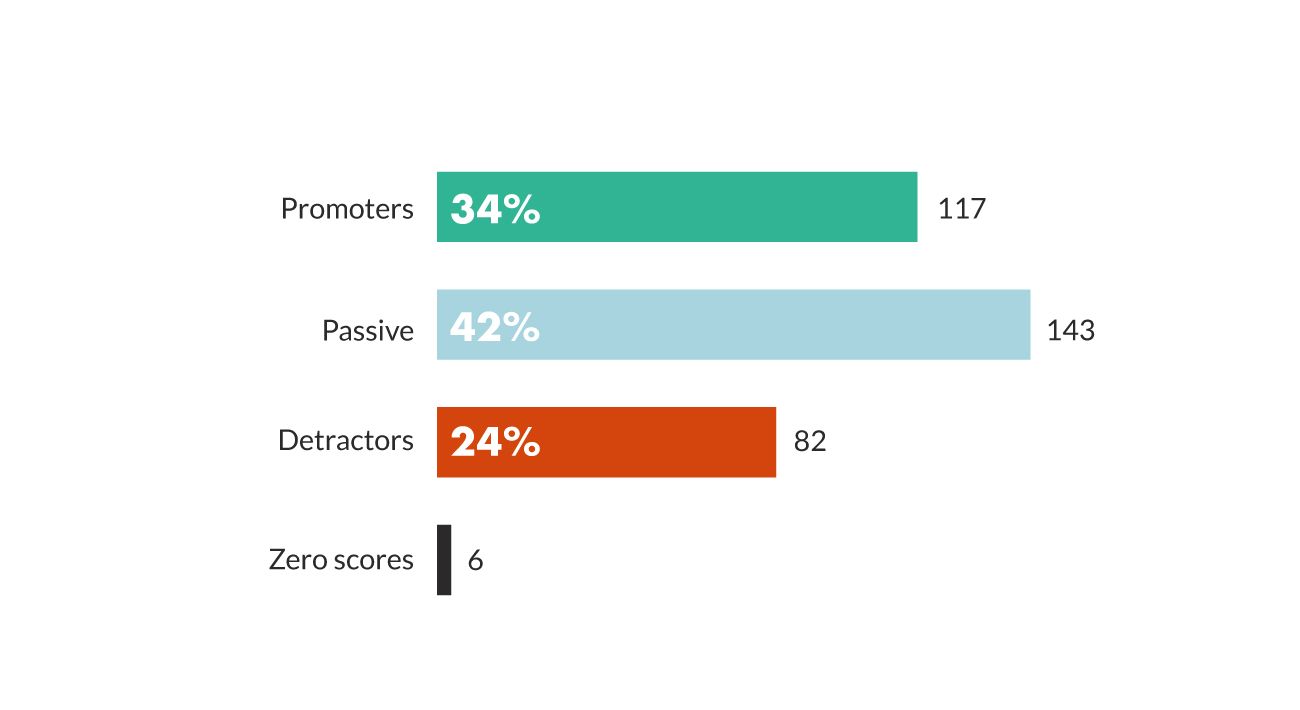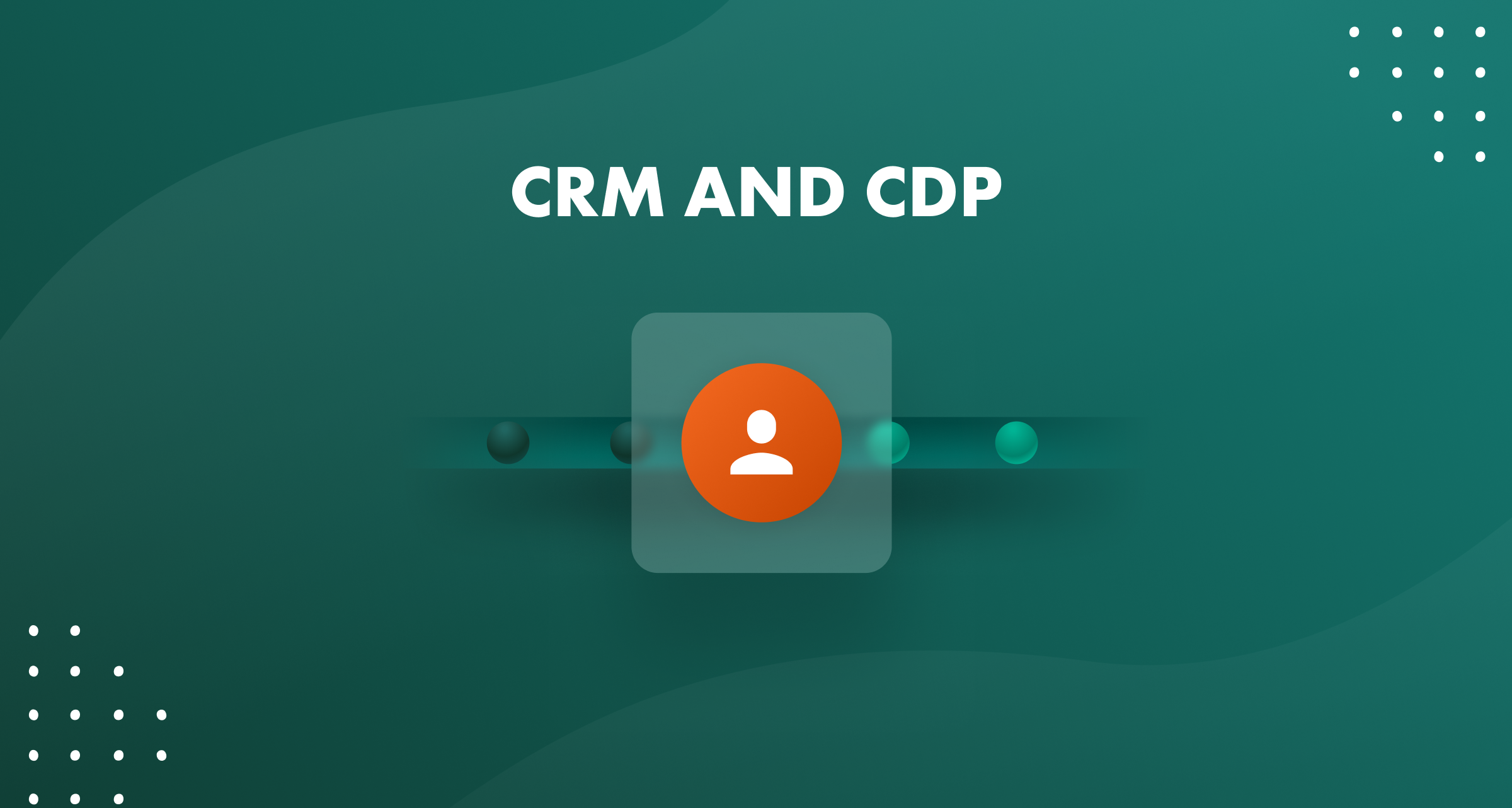On a scale of 0 to 10, how much do you care what your customers think about your business?
Let me guess – it’s 10, isn’t it?
You care a lot about what they think, how they feel and what they say about you.
Simple – you want your customers to be happy and satisfied with what you offer, because (a) they will carry on buying from you, and (b) they will recommend you to others.
And you’re not alone. Every business is trying to make its customers happy. Because if you are not bothered about customer satisfaction, it will cost you!
Word-of-mouth is power
We live in a customer-centric world. Business leaders, such as the CEO of Amazon, Jeff Bezos realized it early enough to define his business ethics as “customer obsession” and turned his company into a global symbol of success.
Even though customer focus has been there for a while, Bezos seems to be its most devoted advocate, explaining: “All the success that we currently have is due to the fact that we put customers first.”
The positive or negative word-of-mouth has the power to make or break any business.
Just one poor customer experience is likely to push 89% of consumers to start doing business with a competitor, a study by Oracle famously claims. But what is even worse is that dissatisfied customers will tell about their bad experience to others!
Research shows that 95% of customers share bad experiences with others. Out of which 45% share negative reviews on social media. And with 88% of customers trusting online reviews as much as they trust their own friends, social media can spread the “bad word” like a wildfire!
In the same vein, good word-of-mouth can do miracles for brands. According to the Nielsen Global Survey, 83% of customers would trust recommendations from the people they know.
Checking the satisfaction pulse
It’s crystal clear – if a business wants to retain its customers and acquire new ones, it must constantly check the satisfaction levels of its existing customers.
There are many customer success metrics used in business. Here is just a handful of the most popular ones:
- Customer Satisfaction Survey (CSAT) measures individual satisfaction with a purchase, transaction or experience.
- Voice of Customer (VoC) measures customers’ expectations, needs and overall feedback on products and services.
- Customer Effort Score (CES) measures how much effort a customer has to exert to get an issue resolved, a request fulfilled, a product purchased/returned or a question answered.
- Net Promoter Score (NPS) measures customer loyalty.
Which one to use depends on what your goal is. Today, we are going to discuss the NPS system and how it helps businesses not only promote customer loyalty, but also grow.
What is NPS and what does it measure?
NPS is a system to measure customer satisfaction, mainly focusing on evaluating customers’ loyalty.
It evaluates whether or not a business is likely to have repeat business and gain new customers. It gives both quantitative and qualitative overview of its customers’ attitudes, by revealing customer sentiment towards your business as a whole!
NPS comes in the form of a short customer survey typically sent twice a year.
A typical NPS asks one question: “On a scale of 0 to 10, how likely are you to recommend this business to a friend or a colleague?” followed by one or two questions, asking for specific reasons behind the given score.
Customers that give you a score within 0-6 range are called detractors; 7-8 passives, and 9-10 promoters.

To calculate the overall NPS for the company, you need to subtract percentage of detractors from the percentage of promoters.

As to what NPS measures, there are four key indicators. NPS:
- measures the likelihood of new and repeat business;
- shows your customers’ overall relationship with your business, as well as their feelings towards your brand and product;
- shows what exactly needs to be improved or further reinforced – this can be done with the help of follow-up questions that ask why your customers would or would not recommend your business to others;
- helps identify trends and track business performance over time.
Finally, the question everyone wants to know is what is a good number for NPS?
Opinions vary, but generally, it’s 30+. If you want to be great – it has to be over 50.
Why is NPS so popular?
The beauty of NPS is that it can be easily understood by everyone in the company and it matters to all! NPS often becomes a KPI for top management, marketing, sales, and Customer Service or Customer Success teams.
For managers, NPS is an indicator of company’s potential growth. For CX and CS people, it shows how loyal and satisfied customers are. For marketing and sales, it’s all about the likelihood of resell, upsell and cross-sell opportunities. Due to its simple, yet universal application – NPS helps everyone to easily see how well a company is doing.
Considering it's one of the more universal tools to measure customer satisfaction and overall experience, a staggering 71% of companies have never used it!

According to London School of Economics, an average NPS increase by 7 points correlates to a 1% growth in revenue.
But … for NPS to really mean something, a business needs not only to calculate the score, but also to act on it.
5-step process to make NPS work for your business
The simplicity of NPS makes it popular. But just having a score means nothing, unless you know how to use it, and – most importantly – benefit from it. Here is a 5-step process to help you put the NPS system to work, based on our own learnings and experience growing our score by more than 20 points.
1. Ask for feedback
What’s the use of having an NPS number, if you don’t know what it stands for in the minds of your customers? I am talking about feedback.
It’s all about the WHY they gave you this score. To make NPS work for you, you need to ask detractors why they gave you a low score, as well as ask promoters what made them rate you high.
Usually, these questions are immediately included in the original survey and are activated once the customer assigns you a certain score.
You can add such follow-up questions as:
- What is the main reason for the score?
- What was missing (disappointing) in your experience with us?
- What do you like most/least about (company or product name)?
- How can we improve your experience?
- What would it take to raise our score just by one point?
- What is the one thing we could do to make you happier?
- We’re happy you rated us so high. Care to tell us why?
Equipped with the knowledge of what works and what doesn’t, you can take tactical steps to improve your business.
2. Act on feedback
Once you have received the feedback, you need to act on it.
First, you need to physically contact both detractors and promoters. These 2 groups are very different and should be treated individually.
Typically, businesses focus on “fixing what’s broken” – i.e. deal with detractors by trying to give them what they want. But that will only help you fix immediate problems and won’t show you the opportunities to improve your customers’ experience in the long term.
By paying attention to what makes promoters tick, you can see what areas or actions should be further stimulated or brought forward in trying to improve your relationships with detractors.
We asked Kristoffer Gerdes, Customer Success Manager at Risika, how he acts on feedback:
“When I call a promoter I always start by saying "Thank you". Then I ask them what they like about our platform, and also if there was anything they feel we could really add to their experience with us and make their daily routines even better. I always round the conversation off by asking them if they know anybody who might benefit from using our platform, and if we could give them a call, which I can then pass onto my Sales colleagues.”
Second, don’t forget about the passives! Passives are a tricky group as they feel neutral about your product. They can quickly turn into detractors easily if left without attention or, alternatively, they can become your brand’s advocates (promoters) if they feel valued. That’s why if passives left a comment on NPS, don’t ignore it – call them! Ask what you can do to improve their experience with your product and help them derive the full value of your proposition.
Kristoffer Gerdes explains: “I actually prefer to call somebody who is a detractor or a passive, as they can supply us with the most valuable feedback as to where we can improve. Of course, it is nice to call somebody to hear how great we are, but I really prefer the other.”
Finally, you need to “close the loop”. It means frontline employees receive real-time feedback from customers, analyze it and act to offer improvements (asap). The best way is to design a closed-loop system that defines processes and gives you tools needed to automate follow-ups with dissatisfied customers.
3. Make the NPS results known
In order to succeed with NPS, the results should be communicated to everyone. From C-Suite management and team leaders, to individual CX or CS agents and sales reps – everyone should be onboard.
For example, here at SuperOffice the NPS results are available for all employees to see on our internal website. The scores are regularly updated and presented in an easy-to-understand format.

We understand that the NPS actually reveals not only the overall customer sentiment towards our business as a whole unit, but also our product, the services we offer, our marketing communication and sales activities – everything.
And SuperOffice is not alone. Kristoffer Gerdes from Risika describes their approach to making NPS public:
“We showcase the NPS results in the company so everybody can see how we are doing and how our NPS is evolving. When we get a reply, I always call the responder to get their feedback. This is very useful! After I’ve talked to them, I post the conversation into our NPS Slack channel, so my colleagues can read what we’ve talked about.”
4. Walk the walk by implementing improvements
The NPS loop will never be closed until you actually implement the improvements your customers asked you for.
First, you start by reaching out and taking measures to implement necessary (immediate) changes, offer more support or training. That’s called “operational” (here and now) handling of NPS feedback.
But here is a trick. You can’t possibly satisfy every customer’s wish or take every suggestion on board.
This is when you need to get strategical – i.e. by analyzing comments, sentiments, trends and topics.
According to Hans Christian Grønsleth, SuperOffice’s Director of Digital Customer Experience and our very own NPS expert, some NPS follow-up conversations with customers reveal problems that can be fixed easily, while some reveal serious problems, which you can’t resolve by simply throwing in a bunch of small fixes. Instead, you need to analyze and plan.
This is how Hans Christian describes the Strategic NPS analysis:
“We start by putting all the comments/replies in buckets and categorize them. And then we analyze the content of these buckets.”
He continues: “Such detailed and categorized analysis gives us insights that help our company be strategic in our actions and, as a result, grow! We use NPS insights when designing new product strategies and assigning R&D priorities, when working on new marketing campaigns, improving customer support or the work of our consultants and CX managers.”
5. Analyze growth trends for your business
Finally, since NPS is a great barometer of your customers’ satisfaction, you can measure and analyze your future growth projections.
If the NPS is high – congratulations – you’re leading a sustainable and healthy business that is prone to grow. A low score, naturally, is a warning that your business could soon shrink and lead to customer churn.
According to Bain and Company, for most businesses NPS accounts for 20% – 60% of their overall growth rate. Studies show that a 12-point increase in NPS leads to a doubling of a company’s growth rate, while the NPS leaders are said to “outgrow their competitors in most industries by an average of 2.5 times”.
Your NPS ratings can help you measure customer retention rates and the number of brand advocates, calculate customer loyalty levels, compare your NPS with the industry leaders, and even measure individual employee performances.
Kristoffer Gerdes explains: “We do not have a specific graph showing the exact correlation between promoters and customer loyalty. But what I can say for sure, is that of all the promoters we have, none of them has churned! So that is definitely showing some kind of loyalty.”
Making NPS your North Star Metric
So, if you do care about you customers and want to get straight 10s on your NPS – you need to put in some effort, and make the NPS system your own North Star Metric – the metric that best captures the core value that your product delivers to your customers.
NPS, in its simplicity of form, is a quick and easy survey for the customers. And it can help everyone in your organization to see how you’re doing collectively in retaining customers and creating loyalty. The NPS and also the feedback behind it reveal how well your brand is received and whether it is able to withstand the winds of competition.
It is also a barometer of whether or not your product indeed creates added value to your customers. And, finally, to some extent, NPS shows how well you managed to help customers derive the maximum value from your offering.
Use NPS to align your efforts across teams in an attempt to reach the one and only goal – make your customers happy and satisfied with what you offer.
Do you want to find new strategies to help you achieve your growth ambitions?




